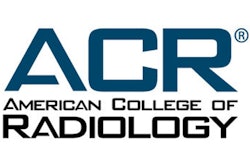
The opportunities for nonphysician providers (NPPs) in radiology practices continue to expand. Recently, the American College of Radiology (ACR) revised its CT and MRI facility accreditation criteria to allow NPPs to be able to directly supervise contrast administration. This mirrors the revised practice parameter for supervision of contrast administration that was previously adopted by the ACR. Note, however, that state licensure laws are the final authority that determine which services may be provided by NPPs.
The ACR's Practice Parameter for the use of Intravascular Contrast Media describes the various levels of supervision involved in the performance of a contrast-enhanced examination. The radiologist responsible for performing the examination may or may not be the same provider as is injecting the contrast media. Injections may be performed by any appropriately credentialed person, including a technologist, registered radiology assistant (RRA) or nurse, as well as a physician, nurse practitioner (NP), or physician assistant (PA).
Under the revised parameter, supervision of the injections may be provided by a radiologist or other physician, a nonphysician such as an NP or PA, or a registered nurse (RN) who has been properly trained and using a symptom- and sign-driven treatment algorithm. The ACR practice parameter specifies the training and competence for anyone who is supervising.
Supervision by a radiologist must be direct supervision, which means that he or she must be present and immediately available to furnish assistance and direction throughout the performance of the procedure. Supervision by a nonradiologist or nonphysician must be under the general supervision of the radiologist, meaning that the procedure is furnished under the radiologist's overall direction and control but that the radiologist's presence is not required during the performance of the procedure.
Although the ACR practice parameter allows for RNs, Medicare regulations do not permit RNs to supervise. Medicare allows NPs and PAs to directly supervise contrast administration under the general supervision of a radiologist. Medicare eased its supervision requirements during the pandemic to allow audio/video real-time communications to be used for supervision, however, that amendment will expire at the end of the year in which the public health emergency ends unless it is extended permanently in future Medicare rulemaking.
As we previously reported, the role of NPPs is expanding. A recent study shows an increase of 16.3% in claims submitted to Medicare by NPPs, with an increase of 17.3% in work RVUs during the period 2017 to 2019. The largest increase in wRVUs was for imaging procedures, followed by evaluation/management services. The most frequently billed procedures were for thoracentesis and paracentesis, with fluoroscopic swallowing studies and bone densitometry the leading imaging exams.
When the NPP performs and bills for a procedure, it is generally reimbursed by Medicare at 85% of the physician fee schedule depending upon the circumstances. When the services are considered "incident-to" the physician's services then reimbursement is at 100%. Commercial payers will have their own policies on the level of reimbursement.
However, even at a reduced rate it makes economic sense for a practice to utilize NPP's to the fullest extent of their capability, as their cost is a fraction of a radiologist's cost. According to the Bureau of Labor Statistics, the 2021 nationwide median cost of a PA was $121,530, whereas a physician would be paid several times that amount.
Although the ACR and Medicare now recognize NPPs as authorized providers for contrast administration, they must be mindful to operate within the limits of their state's licensing. NPPs are providing more services than ever, and it will be interesting to see what the statistics reveal in the years beyond 2019 with the availability of remote supervision capabilities.
Sandy Coffta is the vice president of client services at Healthcare Administrative Partners.
The comments and observations expressed are those of the author and do not necessarily reflect the opinions of AuntMinnie.com.



















